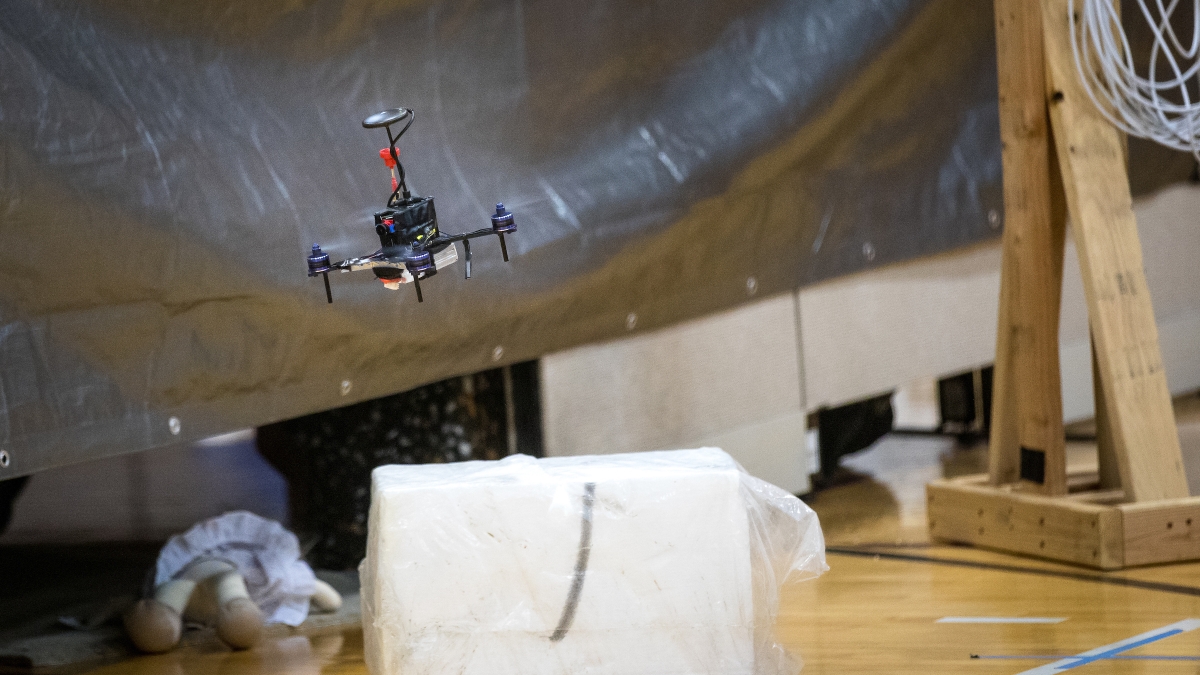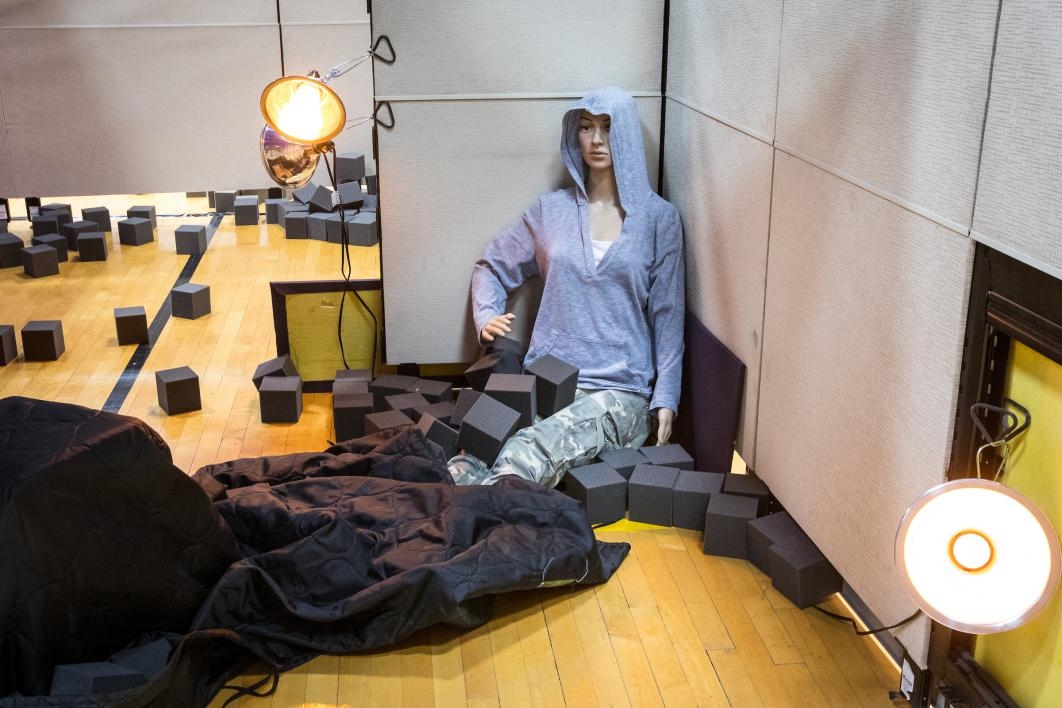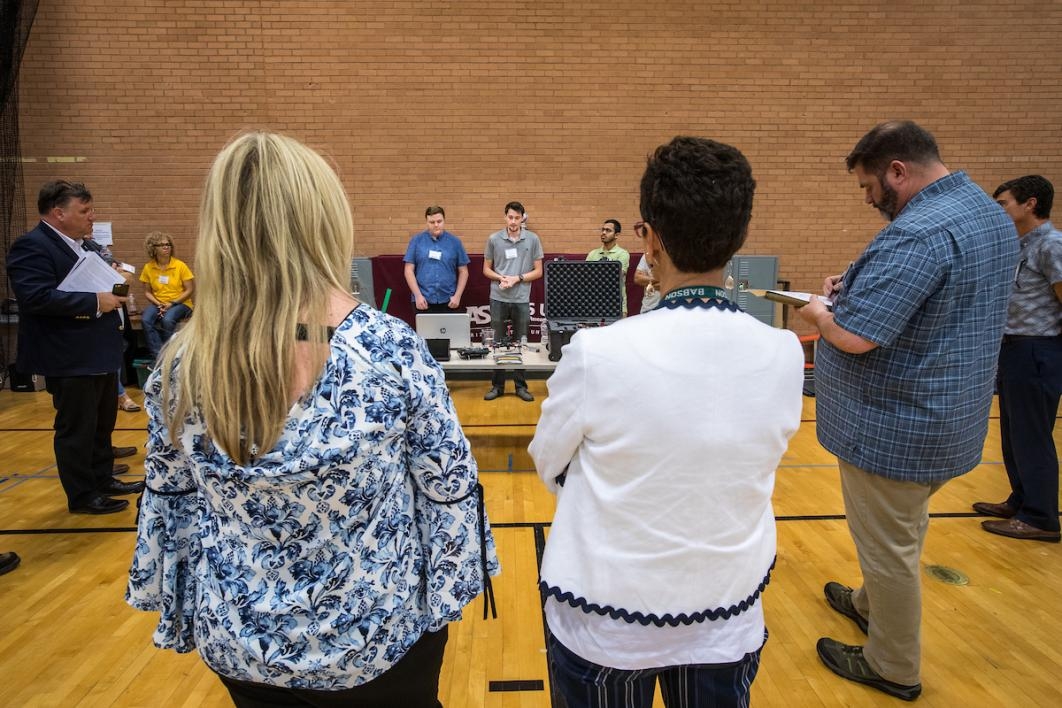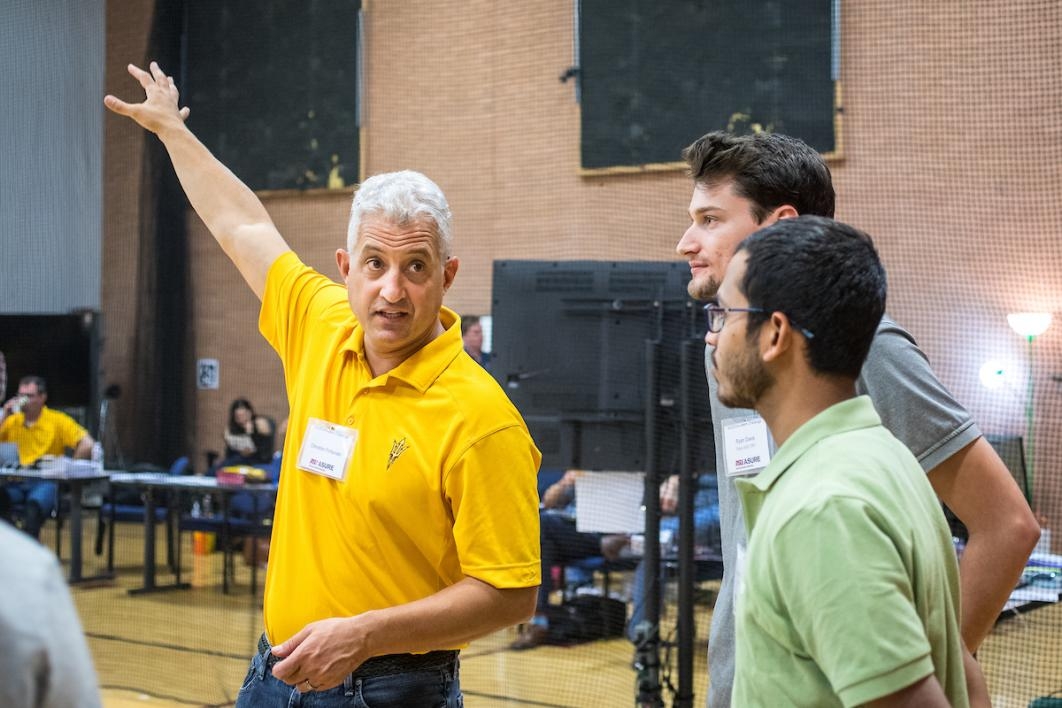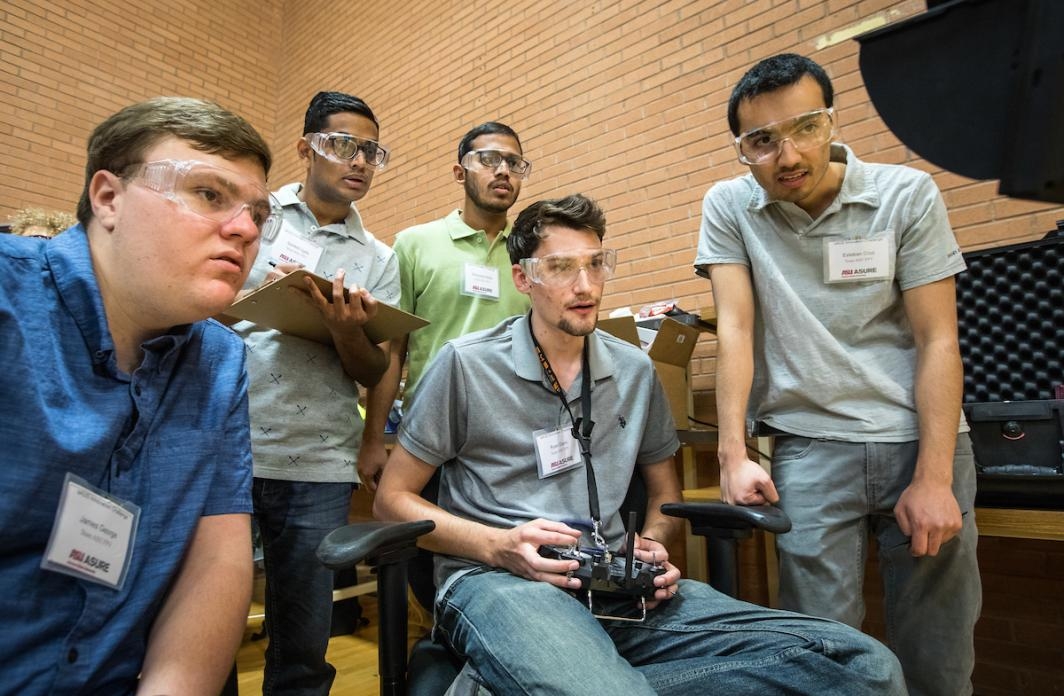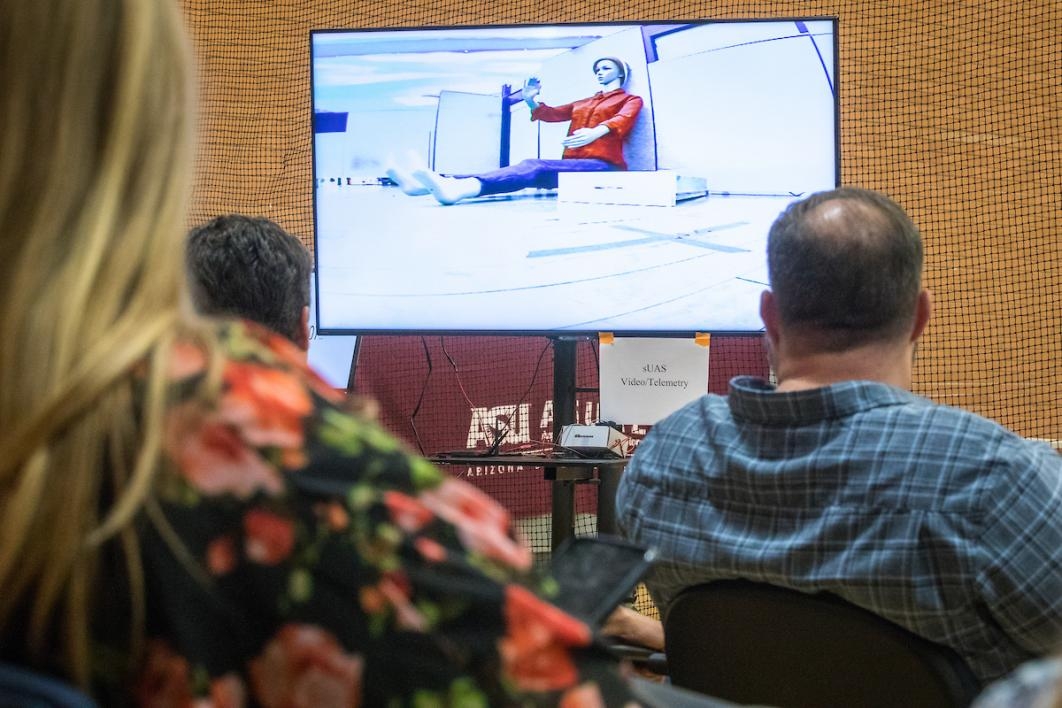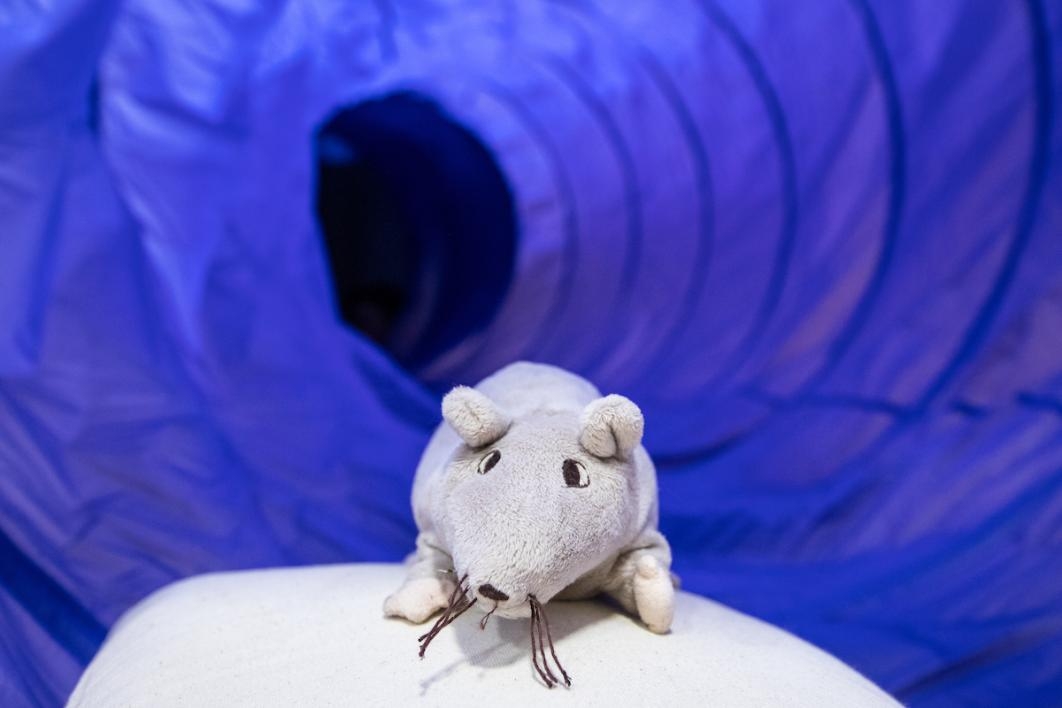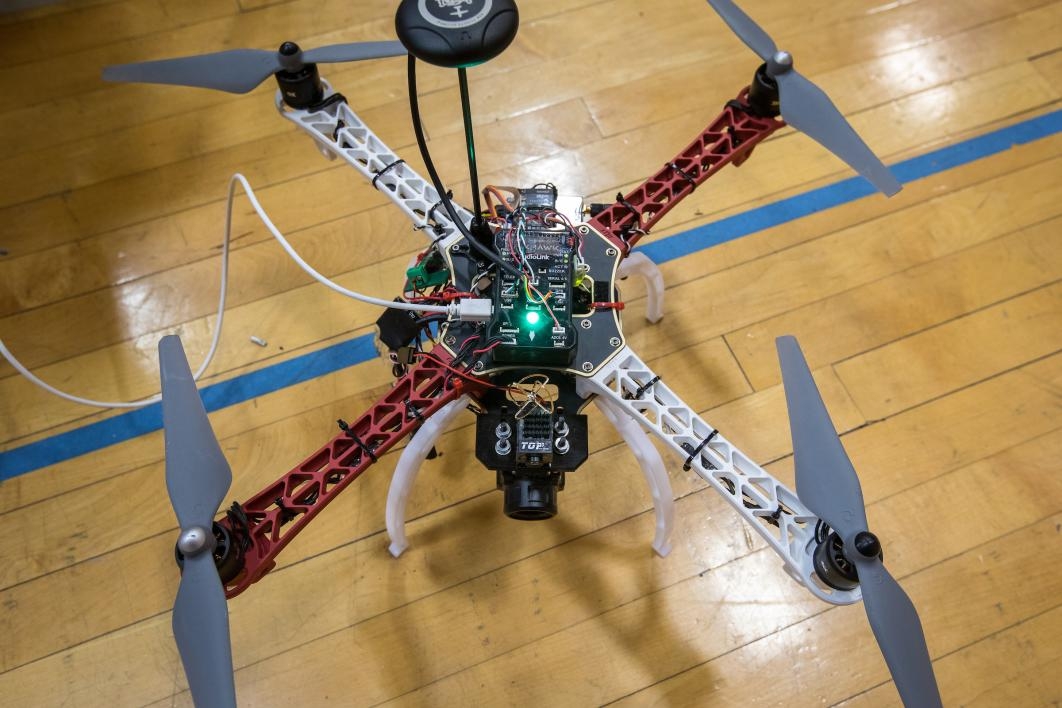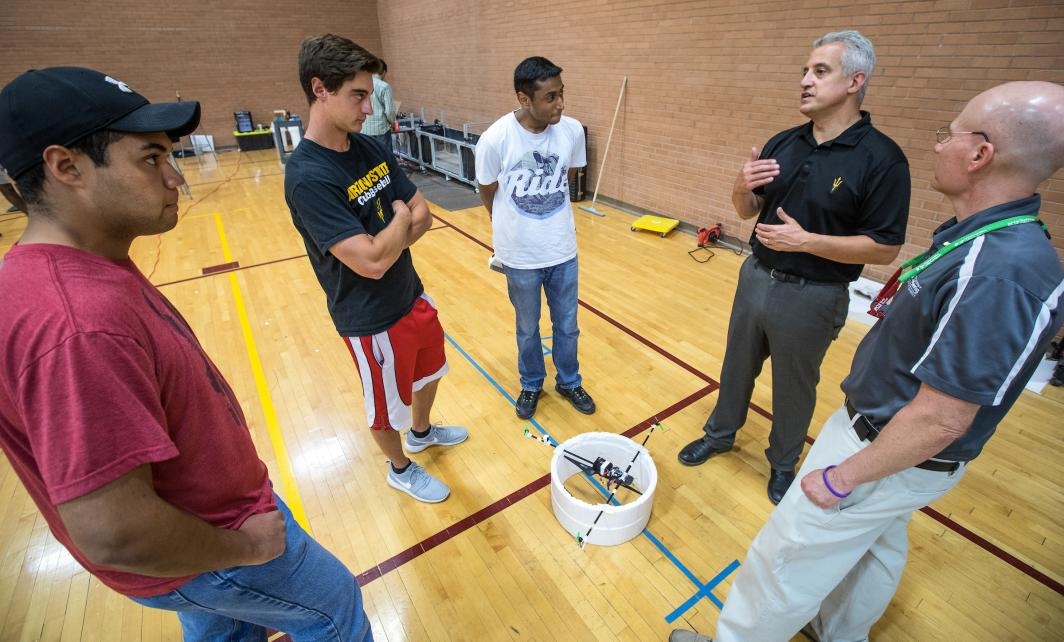The drone threads its way through the disaster area, beneath ceilings and power lines, through narrow corridors, sewer pipes and hallways. Bodies and survivors lie under rubble. When it’s not feeling its way through tight confines, there’s wind to contend with.
Pilot Ryan Davis flies the drone quickly and smoothly. There are no halting or jerky movements.
At each potential location of a survivor, Davis lands and switches on the infrared camera to look for a survivor’s heat signature. The drone doesn’t spend more than 20 seconds at each spot. Then he heads into the sewer pipes.
“Oh boy, look at that,” says an onlooker. “That’s great.”
The disaster area was a gym on Arizona State University’s Tempe campus. Davis is a senior majoring in aerospace engineering. The onlooker was an industry representative, and the event was the finale of the Innovation Challenge, a competition between student teams to design and showcase a drone system to help rescuers find survivors in a disaster environment.
Video by Ken Fagan/ASU Now
The competition was hosted by ASU’s Research Enterprise, a nonprofit arm of the university that connects applied research and development with the Department of Defense, federal agencies and the intelligence community. Industry representatives came from the U.S. Navy, Boeing, Raytheon, the Arizona Department of Emergency Management, and the National Counterterrorism Center, among other others.
Last fall 18 teams were awarded $3,000 each to design their systems. Two design reviews from academic, industry and government reps narrowed the list to eight.
The drone systems had to hit some marks. Real-time video was required. The system had to be a small, lightweight air vehicle so it didn’t overburden teams already humping a lot of gear. It had to be rugged enough to operate in harsh conditions. First responders won’t have time for extended training, so the system needed to be simple to learn, operate and maintain. They had to fly for at least 15 minutes at a time. There were other challenges, but ASU-educated engineers put their minds to them.
Christian Fortunato, a systems engineer at ASU Research Enterprise, was the competition’s maestro.
“This is to help create innovative solutions to problems we face today,” Fortunato said. “Ultimately we hope it’s fun.”
Industry reps were visibly impressed, commenting on the students’ poise in delivering technical discussions as well as how they solved problems.
Fortunato converted the gym into a mock scenario with three buildings, a forest, power lines, sewer pipes hiding a large rat, and bodies under piles of rubble. Flames flickered in one building, and an industrial fan provided a strong wind. Some of the mannequins were warm (heating pads, if you’re curious). Some were at room temperature. The warm bodies were the survivors.
Each team had two and a half hours to present their system and then do the search-and-rescue mission.
Davis’ team was Team ASU First Person Viewer, which was declared the winner of the competition Friday evening.
The team’s system was weather-proofed with a lightweight coating that doesn’t overheat. (They demonstrated this by dunking a motor in a glass of water and turning it on.) This drone has no problem flying in rain or wind. (With a low profile, there’s not a lot of area for wind to grab ahold of.) It came in around $500. Davis and his team had a secret edge; they all belonged to a campus drone racing club.
Maxwell Lombardi, a senior graduating with a degree in robotic engineering, heard about the challenge a year ago in class.
“I’ve always been interested in drones and UAVsUAV stands for an unmanned aerial vehicle.,” Lombardi said. “This is my first time working with them.”
His group, Team Liftoff, built their drone for $3,000. Their infrared camera cost $2,000. Their drone was a modular design, so parts damaged in crashes can be swapped out quickly.
They switched batteries five times, returning to base with about 60 percent power. “We wanted to err on the side of caution,” Lombardi said.
“Good flying skills,” Fortunato commented. “I thought that system performed well.”
Team Jackdaw had the most unusual design; it was a self-inflating parasail.
“It’s all about getting endurance in a small package,” said team member Brett Fiedler.
“We wanted to do something different,” said team member Calvin Caldwell.
“Your system is really made to soar,” Fortunato said.
And soar it did, after a tricky hand launch. It circled like a turkey vulture riding a thermal while buzzing like a bumblebee. An air-conditioning vent created a tough downdraft, which dented the parasail when it flew underneath.
“We know we saw someone in the trees, but we couldn’t tell whether they were alive or dead,” Caldwell said. “It can perform a lot better outdoors.”
Jackdaw’s camera system wasn’t optimal, they admitted. All the teams were constrained by time and money. They earned a lot of praised from the audience for going out on a limb and creating an entirely new aircraft.
“To me, that’s something gold star,” said an industry rep.
Video by Ken Fagan/ASU Now
Top photo: Team ASU First Person Viewer guide their drone in the Innovation Challenge fly-off, a search-and-rescue mission for team-designed and -built small unmanned aerial system, in a gym on the Tempe campus Thursday. The team was one of eight competing in a simulated earthquake-ravaged city. The teams demonstrated their projects' utility and performance in finding survivors and victims in an urban setting. Photo by Charlie Leight/ASU Now
More Science and technology

Cracking the code of online computer science clubs
Experts believe that involvement in college clubs and organizations increases student retention and helps learners build valuable social relationships. There are tons of such clubs on ASU's campuses…
Consortium for Science, Policy & Outcomes celebrates 25 years
For Arizona State University's Consortium for Science, Policy & Outcomes (CSPO), recognizing the past is just as important as designing the future. The consortium marked 25 years in Washington, D…

Hacking satellites to fix our oceans and shoot for the stars
By Preesha KumarFrom memory foam mattresses to the camera and GPS navigation on our phones, technology that was developed for space applications enhances our everyday lives on Earth. In fact, Chris…
